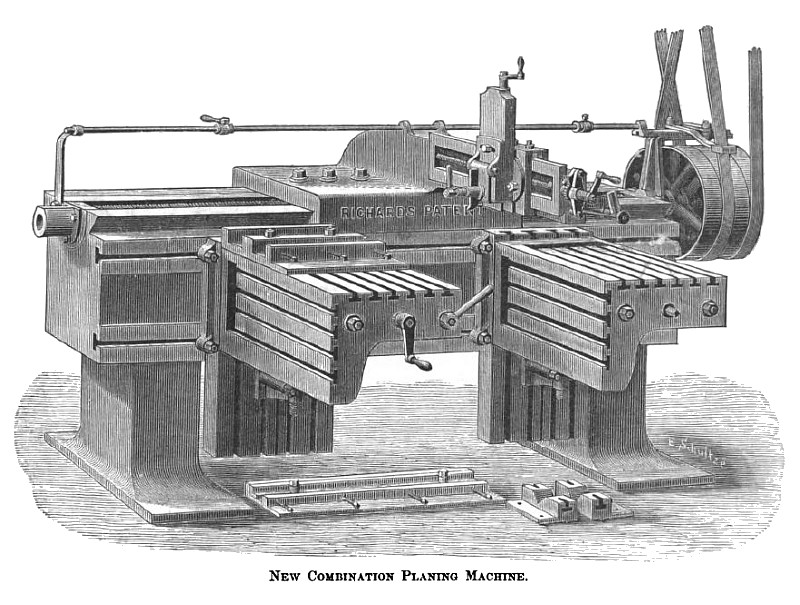|
Title: |
1882 Article-George Richards & Co., Ltd., Combination Planing Machine |
|
Source: |
|
|
Insert Date: |
11/7/2018 1:56:55 PM |
We present on this page an engraving of a new combination, or compound metal, planing machine, designed by John Richards, Superintendent of the San Francisco Tool Company, which, together with E. A. Walker, of Philadelphia, and Geo. Richards & Co., of Manchester, England, are engaged in its manufacture. This tool is not to be confounded with the small shaping machines so extensively used at the present day. On the contrary, the design and construction proceeds from the argument that much power is expended in moving heavy masses of metal on large platens; that the stopping and starting of such masses interferes with the proper functions of a planing machine, viz., the removing of a limited quantity of metal, and that the friction incident to operating a planing machine, in which such masses are reciprocated, not only unnecessarily wears out the parts of the machine, but eventually brings about untruthfulness in the work accomplished. Proceeding from these premises, the present machine is intended for use on heavy work and will be made in sizes as required.
In this machine the work to be operated upon is fastened to the table (two or more of which are fitted to each machine), and the tool is reciprocated by means of a double-thread screw working in a long gun metal nut, which is made in three separate parts, so arranged as to take up lost motion to compensate for wear. The screw gives a strong motion to the tool, and one that is free from all jar, rendering but little preparation necessary for setting the heaviest machines. The motion is also entirely uniform at all parts of the stroke, no change of speed being required to change from the longest to the shortest range, the cutting force not being changed in any way by varying the stroke; but the whole power of the screw being, under all circumstances, applicable directly to the moving of the tool carriage.
The shifting device is clearly shown in the engraving and is so arranged as to firmly lock arms for the stroke in either direction, thus preventing the possibility of the fouling of the belts and bringing about a very positive motion of the cutting tool at either long or short strokes.
The feed motion is operated by a friction device and arranged to work out of contact at each stroke, to avoid dragging and the expenditure of power uselessly.
In these machines, the tool acting at a constant height, that is, being uninfluenced in this respect by the size of the piece being planed, the rigidity of the cutting motion is correspondingly uniform.
The tables have true surfaces in three planes, two of which being available for and adapted in their construction to, the purpose of holding work to be planed facilitates the setting of the work and does away with many special appliances usually found necessary or convenient for this purpose. The use of two or more tables, if desirable, is a convenience in mounting a number of pieces at one time, which can afterwards be planed separately, or pieces can be arranged on one table while the machine is planing those on another.
One of these planing machines is in operation at the works of Walker Brothers, 75 Laurel St., Philadelphia, where, we are informed, visitors may have full opportunities for examination.
U. S. Patent #258,120.
http://datamp.org/patents/displayPatent.php?number=258120&typeCode=0 |
|
 1882 George Richards & Co., Ltd., Combination Planing Machine
1882 George Richards & Co., Ltd., Combination Planing Machine
|
|